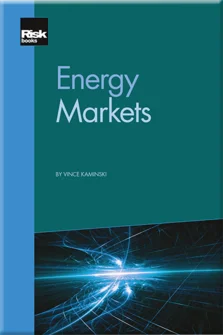Oil Markets: Properties, Production and Reserves
Energy Markets: Introduction
Energy Trading and Marketing: The Macro View
Energy Trading: The Organisation
Weather Information in Energy Trading
Energy Markets: The Instruments
Energy Markets: Structured Transactions
Energy Markets: Exchanges
Energy Markets: Market Participants and Regulatory Developments
Natural Gas: Upstream
Non-conventional Natural Gas
Natural Gas Transportation and Storage
US Natural Gas Markets
International Natural Gas Markets
Oil Markets: Properties, Production and Reserves
Non-Conventional Oil
Oil Processing
Oil Transportation and Storage
Oil Pricing
Transactions in the Oil Markets
Electricity: The Basics
Power Generation
Transmission, Loads and Power Pools
Analytical Tools
Electricity Markets Transactions
Manipulation and Gaming of Energy Markets
Emission Markets
Coal Markets
Conclusions
This chapter will explore some general topics related to the properties of crude oil. One of the biggest differences between natural gas (covered in the previous section) and oil is that the latter is a commodity with multiple grades, with different physical and chemical properties, which translate into differences in market values. A trader always buys or sells a specific grade at a specific location. Even in the case of financial futures with standardised properties of the underlying crude, multiple grades can be usually delivered into a contract. The same is true of refined products for which acceptable specifications vary from location to location and from season to season. The physical components of the industry infrastructure (refineries, pipelines, tankers) are optimised for processing and transporting certain types of crude and products. A typical refinery, for example, is configured for processing certain types of crudes and, if a basket of inputs with different qualities has to be used, profits will be reduced. A trader can create a lot of value if they can match the technological parameters of a refinery with a portfolio of crudes they can acquire in the market.
On
Copyright Infopro Digital Limited. All rights reserved.
As outlined in our terms and conditions, https://www.infopro-digital.com/terms-and-conditions/subscriptions/ (point 2.4), printing is limited to a single copy.
If you would like to purchase additional rights please email info@risk.net
Copyright Infopro Digital Limited. All rights reserved.
You may share this content using our article tools. As outlined in our terms and conditions, https://www.infopro-digital.com/terms-and-conditions/subscriptions/ (clause 2.4), an Authorised User may only make one copy of the materials for their own personal use. You must also comply with the restrictions in clause 2.5.
If you would like to purchase additional rights please email info@risk.net











